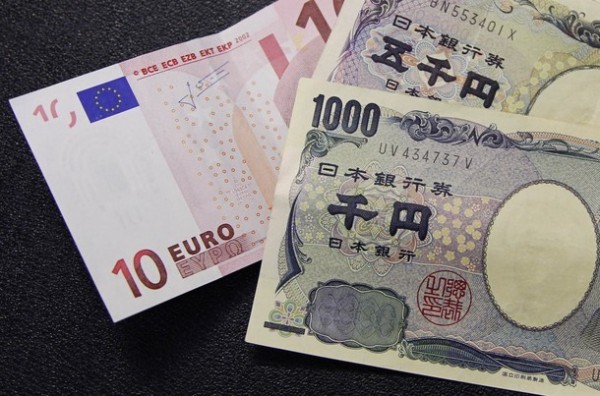Forex
Euro advances, surges to 15-year peak vs yen, after ECB lifts rates

The euro hit a 15-year peak against the yen and a five-week high against the dollar on Thursday after the European Central Bank raised interest rates for the eighth straight time and signaled further tightening to bring euro zone inflation to its medium-term target of 2%.
The ECB lifted rates by 25 basis points (bps), as expected, to 3.5%, the highest in 22 years.
Its staff have also increased their forecasts for inflation excluding energy and food, especially for this year and next, owing to past upward surprises. The inflation projection for this year was raised to 5.1% from 4.6%.
“Our baseline expectation is a final 25-bp hike in July to a terminal rate of 3.75%. The risks remain clearly to the upside,” wrote Deutsche Bank in a research note led by chief economist Mark Wall.
“There were hawkish elements in the latest ECB press conference, in particular the upwardly revised 2025 inflation forecasts. There were a few dovish elements too. President (Christine) Lagarde clearly signaled a hike in July but deliberately avoided guiding expectations for September.”
In afternoon trading, the euro was last up 1.1% at $1.0948 after earlier touching a five-week high of $1.0952 against the dollar. Versus the yen, the euro rose 1.2% to 153.52, hitting 153.68 yen, the highest since September 2008, following the ECB decision.
The ECB move came a day after the U.S. Federal Reserve left interest rates unchanged but signaled further rate hikes to come this year
The Fed’s policy decision snapped a string of 10 consecutive rate hikes, but the projections, or dot plot, showed policymakers expect two more increases by the end of 2023. Chair Jerome Powell said rate cuts in 2023 would not be appropriate.
The Bank of Japan follows on Friday, when it is expected to maintain its ultra-dovish stance and yield-curve control settings.
The dollar index, which measures the currency against a basket of other major currencies, was last down 0.8 at 102.11. Earlier in the session, the index dropped to 102.08, a five-week low.
“Risks appear to be tilted towards more losses (for the dollar)… a break to new-range lows. The (dollar index) looks more or less fairly valued, based on the two-year spreads versus its major currency peers,” Shaun Osborne, chief FX strategist, said at Scotiabank in Toronto.
“Beyond the near-term outlook for rates, the U.S. dollar may be looking at a somewhat more challenging environment. The global monetary policy cycle is approaching its end game. We have assumed for some time that the rate-cycle peak would be a negative for the dollar peak yields will bolster risk-taking and encourage investors to deploy capital away from the U.S. dollar.”
The dollar briefly trimmed losses after data showed U.S. retail sales unexpectedly rose in May, increasing 0.3% last month after rising 0.4% in April. Economists polled by Reuters had forecast sales slipping 0.1%.
A separate report from the U.S. Labor Department on Thursday showed initial claims for state unemployment benefits unchanged at a seasonally adjusted 262,0000 for the week ended June 10. Economists polled by Reuters had forecast 249,000 claims for the latest week.

 Forex3 years ago
Forex3 years agoForex Today: the dollar is gaining strength amid gloomy sentiment at the start of the Fed’s week

 Forex3 years ago
Forex3 years agoUnbiased review of Pocket Option broker

 Forex3 years ago
Forex3 years agoDollar to pound sterling exchange rate today: Pound plummeted to its lowest since 1985

 Forex3 years ago
Forex3 years agoHow is the Australian dollar doing today?

 Cryptocurrency3 years ago
Cryptocurrency3 years agoWhat happened in the crypto market – current events today

 World3 years ago
World3 years agoWhy are modern video games an art form?

 Commodities3 years ago
Commodities3 years agoCopper continues to fall in price on expectations of lower demand in China

 Economy3 years ago
Economy3 years agoCrude oil tankers double in price due to EU anti-Russian sanctions





















